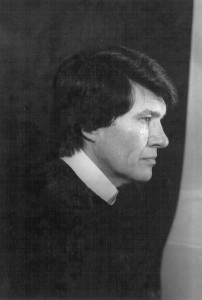
My classes at LSUA are moving along in the second half of the semester. We are working toward our student shows that will be held near the end of the term. Then it will be summer vacation for some of the students and faculty. Looks like many of us will be planning “stay-cations” again this year. I was talking with my pottery students about ideas for a guest pottery show in the Gallery this summer. Our conversation led to the wealth of regional potters and pottery, and places where the well-known works can be seen. Several are relatively close and would make nice short trips.
One of my favorite places is the Shearwater Pottery in Ocean Springs, MS. While they produce both utilitarian and art pieces, they are known for their beautiful dinnerware. Shearwater Pottery was established in 1928 by Peter Anderson. By 1930, he had been joined by his two younger brothers, painters James McConnell “Mac” and Walter Inglis Anderson. It was a perfect arrangement. Peter created the pots, Walter and Mac decorated them. From early on, their unique glazes hallmarked the pieces with the serene colors of the Gulf Coast, reflecting water, sand, sun and sky. Two types of clay were used for Anderson pottery: a white bodied ball clay from Tennessee that produced underglazed castware from molds; and a buff bodied type from Mississippi and Alabama, used for thrown pieces. Peter Anderson died in 1984, leaving the pottery to his four children, three of whom are also potters.
Hurricane Katrina virtually destroyed Shearwater Pottery and it took 2 years to repair and reopen in 2007. But all is back to normal and pottery is being produced in the same way as Peter Anderson intended. The Pottery is still run by his children, along with their children. Sons, Michael and Jim Anderson work along with their sister, Patricia Anderson Findreisen, Jim’s son, Peter, and cousin, Adele Anderson Lawton, Mac’s daughter. Shearwater’s products are dishwasher, microwave, and oven safe and are reasonably priced.
Everyone in these parts knows about Newcomb pottery, but don’t even think about prices on those. Newcomb pots now go for thousands…yes, thousands! Best known for the beautiful blue and green glazes, these pots reflect the art nouveau style of the early twentieth century. William and Ellsworth Woodward established the art department and pottery at Newcomb College in 1894. They hired Mary Sheerer to teach decoration and Joseph Meyer to handle the pot throwing. The students learned to decorate the pots in the designs of the South, flora and fauna of Louisiana. Local and regional clay was used. Several of the students went on to become well established artists.
Sadie Irvine (1887-1970) is probably the best known of the Newcomb students. She attended Newcomb from 1902 to 1906 and was mentored by Ellsworth Woodward. Her pots go for the highest prices on today’s market. Harriet Joor (1875-1965) graduated in 1895. She taught at the University of Chicago for many years before returning to Louisiana to teach at ULL. Maria de Hoa le Blanc (1874-1954) studied both here and abroad, and became an internationally-known potter. All of these young ladies were students of Joseph Meyer, who taught and worked at the pottery from 1896 until his retirement in 1927. The Newcomb Pottery ceased production in 1940, becoming the Newcomb Guild. The Guild, under the leadership of Sadie Irvine, produced more utilitarian wares as art pottery was cost-prohibitive during those years. Finally, the Newcomb Guild closed when Sadie Irvine retired in 1952. Interestingly, Meyer was from Biloxi where he had grown up with George Ohr. When Meyer went to Newcomb, he brought Ohr along with him to be his assistant. Ohr only lasted a year or so, being fired by the College because he was seen as “not fit to instruct young ladies!”
Speaking of George Ohr, the self-proclaimed “mad potter of Biloxi” was both admired and disdained by his contemporaries. Ohr studied with his childhood friend, Joseph Meyer, and ultimately produced over 10,000 pots, calling them his “clay babies”. He declared that “no two are alike!” Of course, no one would have known this had it not been for a New Jersey junk collector who bought the entire warehouse from one of Ohr’s heirs, hauled it back north, and began selling the pots, tantalizing the public by only offering several pots per year for sale!
George Ohr has been called the “father of the American abstract-expressionist movement” by some art critics and the father of “American surrealism – Dadaism” by others. Whatever your opinion of Ohr and his work, they are demanding high prices on today’s market. But buyer beware that there are often Ohr pots on eBay as originals that are in fact reproductions. If you want to see some of his work, plan a trip to the Ohr-O’Keefe Museum in Biloxi. This museum also suffered from Katrina while it was under construction, but is now up and running. They have several other major collections, including a building devoted entirely to African-American art.
I hope that this gives you some ideas for pursuing art. We are blessed by it and made better for having experienced it. Watch for upcoming arts events at LSUA throughout the rest of this semester and during the summer. We welcome you to our campus any time. For more information, please do not hesitate to contact me at (318) 473-6449.









